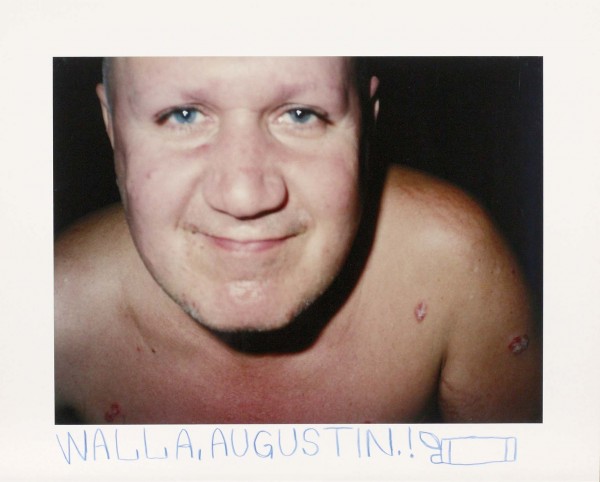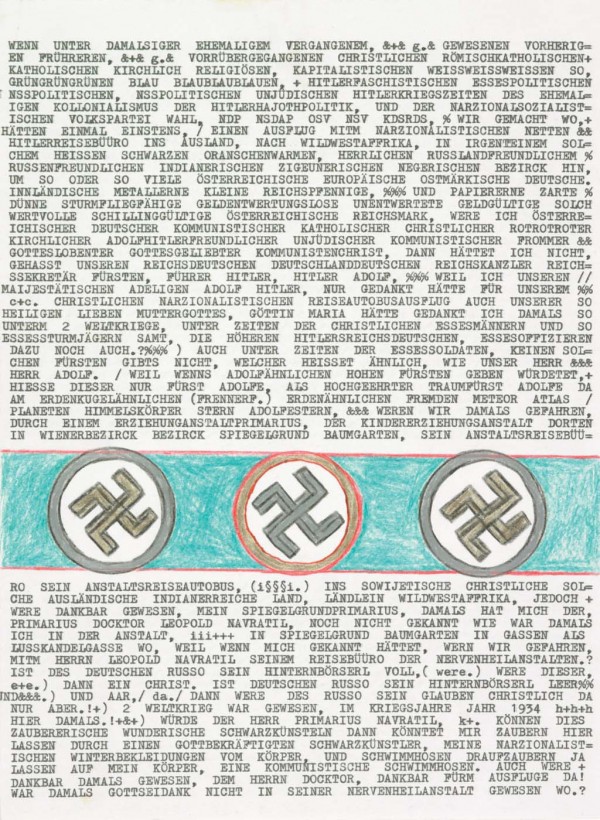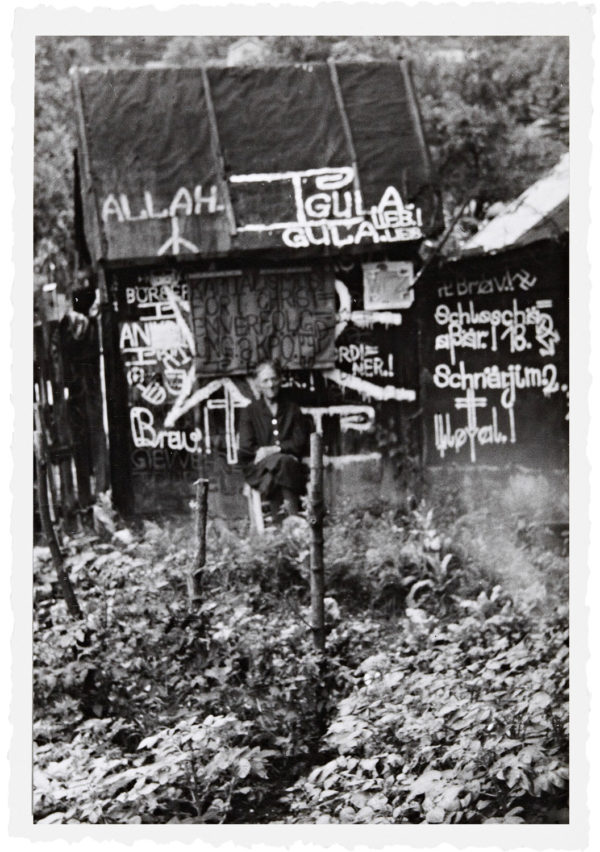Walla grew up an only child. After his father’s death, he and his mother developed a strong emotional dependency. He had difficulties adapting to school, and so was placed in a special education program. When he was nine, he spent three months not sleeping – a terrifying experience. Seven years later, he threatened to hang himself, and also set a barn on fire. He was subsequently diagnosed with schizophrenia and committed to a mental hospital. In 1970, he was admitted to the psychiatric clinic in Gugging. After becoming a client of Gugging’s House of Artists in 1986, he threw himself fully into making art. He covered every inch of the walls and floor of the room that he briefly shared with his mother with mysterious symbols and mythological figures — gods, demons, saints, prophets, wizards. He collect- ed all kinds of items that he found in garbage cans and on the street, describing them and thus bringing them back to life. He collected foreign-language dictionaries and came up with neologisms that he randomly combined according to his fantasy. His work is full of political symbols, in which he saw a specific meaning: the swastika represents the female sex, while the hammer and sickle represent manhood. Walla believed that he was a woman during the Nazi era and that a “Russian operation” turned him into a man. In his self-portraits, he sometimes depicted himself as Hitler or as a “communist commander”. He understood his work as a kind of protective amulet.






